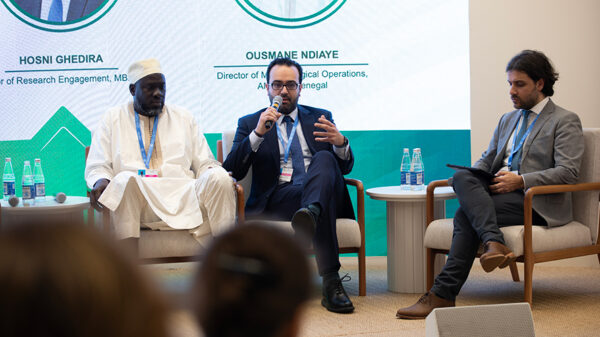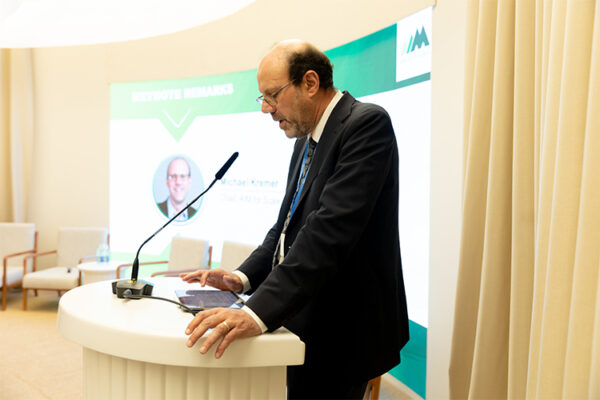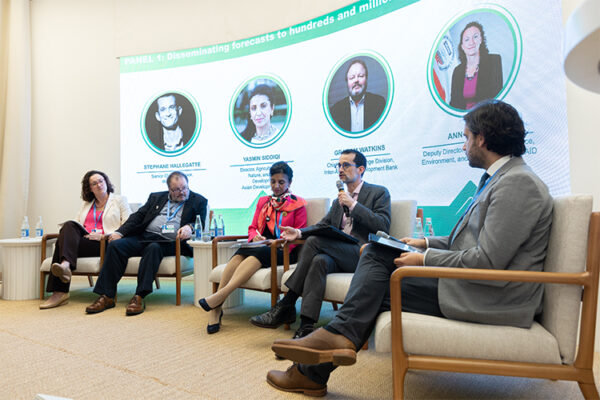weather package
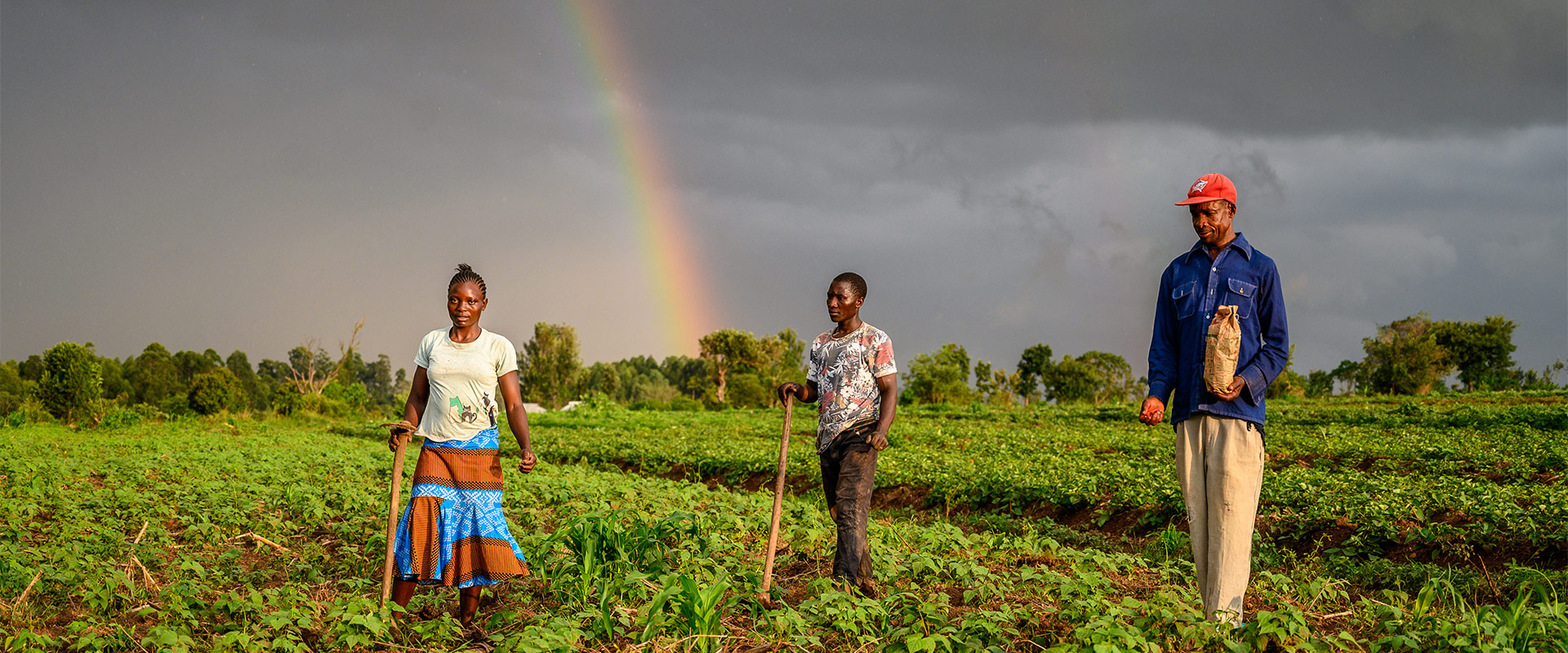
Revolutionizing Weather
Forecasting for Farmers
in Low- and Middle-Income Countries
hundreds of millions of farmers to effectively adapt to climate change.
AIM for Scale is committed to scaling cost-effective innovations that improve the livelihoods of farmers in low- and middle-income countries (LMICs). In 2024, AIM for Scale is launching its first Innovation Package, focused on generating and disseminating high-quality weather forecasts to meet the needs of hundreds of millions of farmers over the next two years. This ambitious initiative will be executed through strategic partnerships with donors, governments, civil society, academia, and the private sector.
Motivation
Disseminating high-quality, farmer-centered weather forecasts at scale in LMICs
Hundreds of millions of smallholder farmers around the world could benefit from increased access to accurate, relevant, and timely weather and seasonal forecasts. Studies show that farmers adapt their practices and make critical investment decisions based on weather information.
Over $3 billion in benefits
Could be generated from improving state-level forecasts of monsoon rainfall totals in India
$103 to $356 per farmer
Estimated annual benefits from randomized trials
in Benin and Colombia
100-to-1*
* Estimates based on Rosenzweig and Udry, 2019 using 2023 USD.
These examples highlight the immense potential of weather forecasts to enhance agricultural productivity and resilience. AIM for Scale aims to improve the quality and availability of weather forecasts and ensure that they are delivered in a way that meets the needs of farmers.
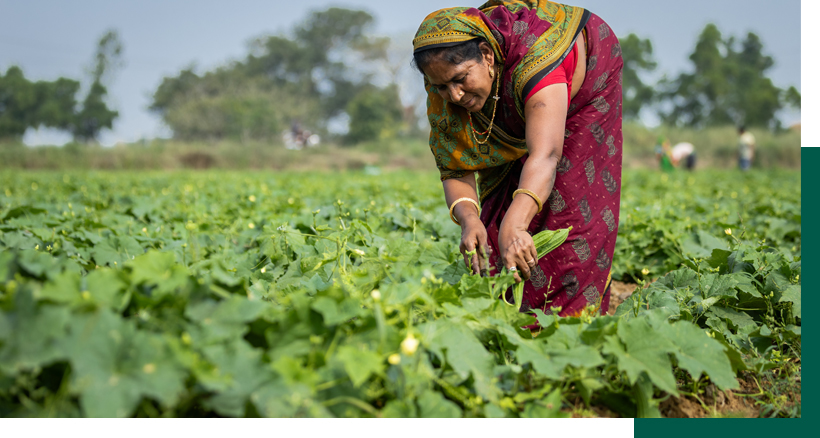
The Need for Action: Scaling Weather Services in LMICs
Despite promising efforts to provide weather and climate information to farmers over the past three decades, significant barriers remain. To reach the hundreds of millions of farmers who could benefit from these services, we need:
- Increased funding and global coordination.
- Better forecast quality and delivery methods.
- Innovative technologies like artificial intelligence (AI) to make weather predictions more affordable and accessible in resource-constrained settings.
AIM for Scale, in partnership with the Innovation Commission, has developed a blueprint for coordinated action to bridge these gaps. Our Innovation Package is designed to deliver high-quality, farmer-relevant weather information and address three key premises:
01
Access to accurate information is crucial for decision-making.
02
The delivery method and messaging significantly affect how farmers use weather forecasts.
03
The quality of weather information can be improved through better data and advanced technologies like AI.
This comprehensive approach aims to overcome historical barriers and provide actionable, localized weather forecasts to farmers in LMICs.
News & Events
Innovation Package Components
This Innovation Package addresses investment and coordination gaps along the supply chain of weather services for farmers. It includes upstream and downstream investments to:
- Improve the quality and availability of weather observations and agricultural data
- Develop tools to validate the farmer-relevant accuracy of weather forecasts
- Accelerate the generation of state-of-the-art farmer-centered forecasts
- Facilitate the dissemination of high-quality forecasts to farmers
- And generate learning to refine dissemination through evaluation and A/B testing
These components should not be treated as sequential steps, but rather as interacting and complementary investments. AIM for Scale is leading a consortium of partners to ensure the completion and coordination of activities, with the ultimate goal of supporting hundreds of millions of farmers with farmer-relevant weather information. The Innovation Package involves global coordination for the development of guidance, prototyping, and best practices for and from national implementation, as well as regional and local investments involving National Meteorological and Hydrological Services (NMHS), government agencies, the private sector, and farmers.
We propose to improve accessibility and availability of meteorological and agricultural data through diplomatic efforts, innovative financing models, and infrastructure enhancement. This component is initiating in 2024, with various timelines for specific activities ranging from 6 months to 3 years.

- Mobilize support for countries to generate and internationally exchange essential observation data according to the WMO Global Basic Observing Network (GBON) and to improve access to improved forecasts.
- Mobilize investments to increase the number and improve the placement of weather data collection infrastructure to improve forecast generation and validation at local scales and maximize the gain in forecast skill for the parameters needed in farmers’ decision-making.
- Work with governments to identify necessary agricultural data to inform forecast needs and weather advisories for a functioning agrometeorological system.
- Generate partnerships to induce non-traditional stakeholders to invest in critical public infrastructure, procurement, and maintenance. This could involve a pilot to determine whether co-locating weather stations at cell phone tower sites is a scalable, cost-effective model to increase the availability of observation data leveraging private-sector funding, or partnerships between meteorological services and other stakeholders for the operations and maintenance of observation stations.
- 10-15 additional countries sharing data publicly or through a federated system by 2027.
- USD 50 million in additional investments for data collection infrastructure by 2026.
- Agricultural data and farmer needs identified in 3-4 LMICs by 2026.
We propose to enhance the transparency of forecast performance and incentivize LMIC focused model innovation through a publicly-available benchmarking and validation system that accounts for local needs, building on and expanding ongoing efforts to reach global scale. This component is initiating in 2024, with a timeline of 2 years for completion.

- Build a platform to enable users (e.g. governments, private sector farmer-facing organizations, and farmers) to assess weather forecast performance against evaluation datasets with scientific metrics, facilitating comparisons of forecast quality based on region-specific, agriculturally-relevant, and time-sensitive benchmarks. This platform aims to also drive innovation to address accuracy gaps.
- Integrate open or federated data on both meteorology and agriculture into validation of forecast output and benchmarks.
- Prototypic visualization and evaluation system designed for users to evaluate a range of weather forecasts based on regional, agricultural, operational, and meteorological criteria to drive organizational decision-making for adoption, operationalization, and interpretation.
We propose to democratize the production of farmer-centered weather forecasts in LMICs by leveraging advances in AI. This component will begin in 2024, with various timelines for specific activities ranging from 1 year to 3 years.

- Operationalize AI-based 1-10-day forecasts tailored for high-priority use cases, such as specific crops and locations.
- Pioneer and operationalize AI-based subseasonal-to-seasonal (S2S) forecasts in the service of agricultural needs.
- Develop a training program and invest in infrastructure for the production of agriculturally-relevant AI-based weather predictions in NMHS and agencies responsible for the dissemination of information to farmers. In addition to AI-based forecasts, the curriculum will include training in the communication and co-production of climate services in agriculture for enhanced stakeholder uptake and feedback on products.
- Operational AI-based forecasts for high-priority use cases in 2 countries by 2025, 4 countries in 2026, and 6 countries in 2027, run on NMHS infrastructure
- Pilot training program launched with 2 representatives from 10 countries in 2025.
- Scalable training program rolled out to representatives from 20 countries in 2026 and 30 countries in 2027, designed to account for lessons learned in the pilot stage.
AIM for Scale is proposing to broker partnerships to strengthen digital systems and co-produce and deliver advisory services, using weather information as an entry point. This component will begin in 2025, with various timelines for specific activities ranging from 6 months to 2 years.

- Conduct comprehensive and participatory assessments of farmer needs, public and private agriculture advisory services, data availability for weather and agriculture, and forecasting capabilities across Asia, Latin America, and sub-Saharan Africa. This process will build on previous efforts and take into account varying needs and readiness across countries, as well as gender equity and inclusion considerations.
- Coordinate access to high-quality forecasts in response to country demand to address farmers’ immediate need for climate information.
- Coordinate access to high-quality forecasts in response to country demand to address farmers’ immediate need for climate information.
- Standard assessment template to identify farmer needs, as well as data collection and forecasting capabilities across 8 countries by 2026.
- Monsoon onset forecasts delivered to more than 50 million farmers through government channels in India in 2025.
- Farmer-centered forecasts delivered to more than 100 million farmers in Asia, Latin America, and sub-Saharan Africa in 2026.
AIM for Scale is proposing to facilitate testing and evaluation to effectively scale dissemination efforts. This component will begin in 2025, with various timelines for specific activities ranging from 3 months to several years.

- Test and continually improve dissemination activities to help ensure that farmers understand forecasts and information is achieving maximum benefits. This may include measuring behavior change and will produce generalizable insights of benefits to other countries.
- Test approaches to train agriculture sector stakeholders (from extension workers to government staff and others) on how to best apply and operationalize weather predictions for the benefit of farmers.
- Conduct cost-benefit analyses to assess the value of investing in improvements along the value chain of weather services, including observation networks, benchmarking, AI-based forecast generation, and dissemination.
- Lessons about effective and cost-effective strategies for disseminating forecasts, changing behavior at scale, and complementing weather forecasts with additional advisory services.
- Lessons on how to best train stakeholders in the agriculture sector to operationalize forecasts for the benefit of farmers.
- 1-2 cost-benefit analyses assessing the potential benefits of improvements along the value chain of weather forecasting for LMICs.
Technical Panel

Chair – Technical Panel
Assistant Professor at Harris Public Policy at the University of Chicago

Dr. Diana Francis is an internationally recognized Climate Scientist and Environmental expert. She is the head of the Environmental and Geophysical Sciences (ENGEOS) lab at Khalifa University. Her work is centered on the study of atmospheric and climate sciences. She has successfully managed numerous scientific projects related to environmental and atmospheric sciences. She has communicated her findings through many publications in high-ranked peer-reviewed journals and many international conferences.
Before her current role at Khalifa University, she worked for over 10 years as a research scientist in various European institutions. She holds a Ph.D. in Atmospheric and Climate Sciences from Sorbonne Universités – Paris, France, as well as Master degrees in Environmental Sciences and Physics. Dr. Francis holds several roles within the international climate and atmospheric sciences community; she is an active member of key international organizations, scientific committees and advisory boards. Currently, she is an Associate Editor for Frontiers in Environmental Sciences.

Erin Coughlan de Perez is the CBF Professor at Friedman School of Nutrition at Tufts University. She directs the Center for Climate and Health glObal Research on Disasters (CORD), global consortium on climate, health, and Anticipatory Action. Erin’s research bridges the gap between climate science, policy, and practice, focusing on the ability to anticipate and manage disasters, including droughts, floods, and heatwaves, before they occur. She researches adoption and effectiveness of adaptation measures in the face of climate change.
Previously Erin was at the Red Cross Red Crescent Climate Centre, where she established a global climate science team and pioneered Forecast-based Financing pilots. She maintains a senior advisor role there, ensuring strong ties to global humanitarian efforts. Erin is also a lead author for the IPCC 6th Assessment Report, for the chapter: Decision-Making Options for Managing Risk. Additionally, she serves as an academic editor for the journal PLOS Climate and serves on the Council of the American Meteorological Society. She holds a Ph.D. from Vrije Universiteit Amsterdam and a M.A. from Columbia University.

Ousmane Ndiaye is the acting director general of African Center of meteorological Application for Development (ACMAD), prior to that he was leading Senegalese meteorological service at the Agency of Civil Aviation and Meteorology (ANACIM). He has interest in climate prediction and its application in a broad sense: user engagement and ownership, tailoring climate information, private partnership, communication.
Ousmane has worked many years with partners (NGOs, research, extension services, end-users) on how to deliver climate information services from end to end. He is a contributing author of the 6th IPCC report (Working Group I) and a board member of the Global Heat Health Information Network (GHHIN). Ousmane holds a PhD from Columbia University in New York.




Principal Officer – Predictive Analytics

Contact Us
For more information on how you can get involved in the Weather Innovation Package, please reach out to us at: info@aimforscale.org

